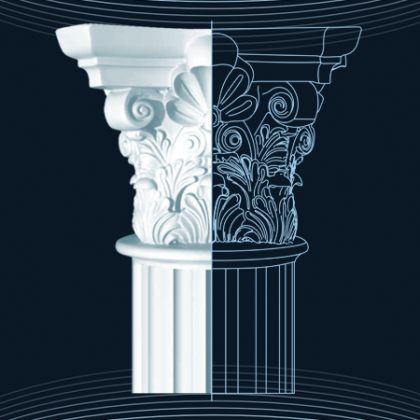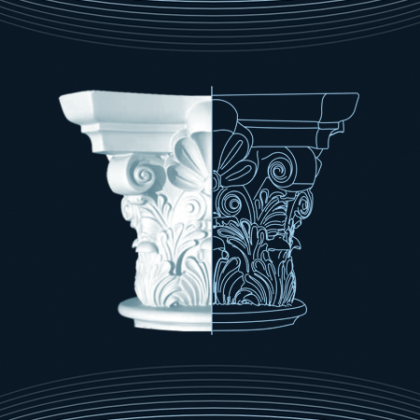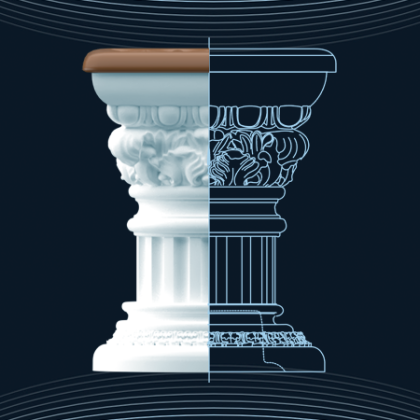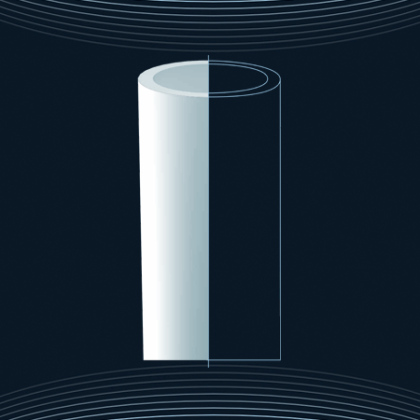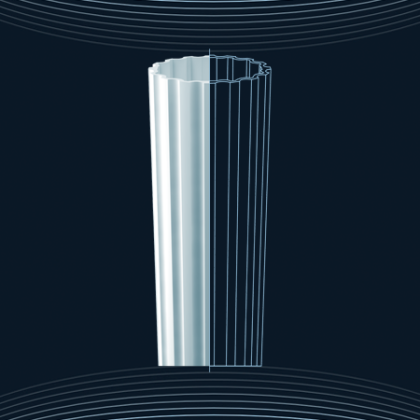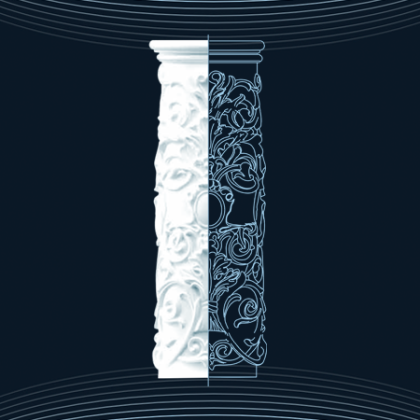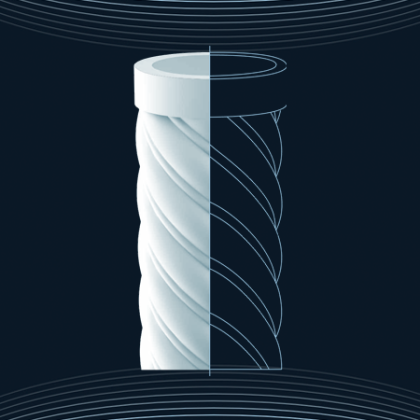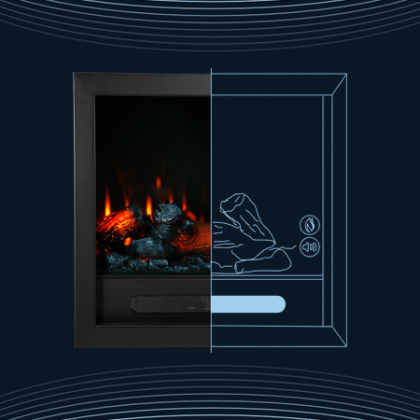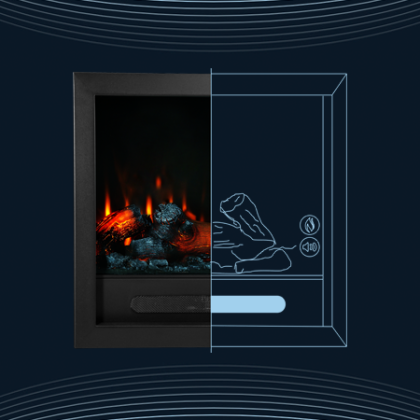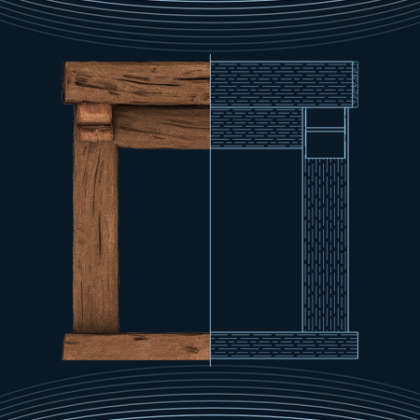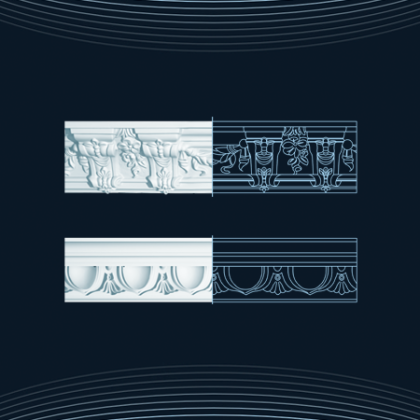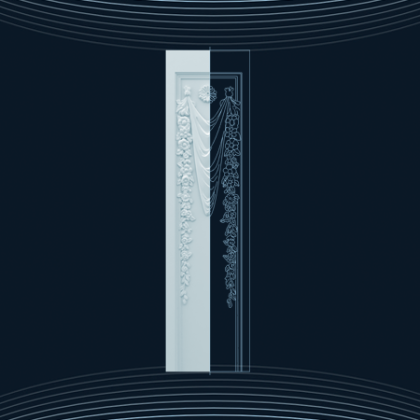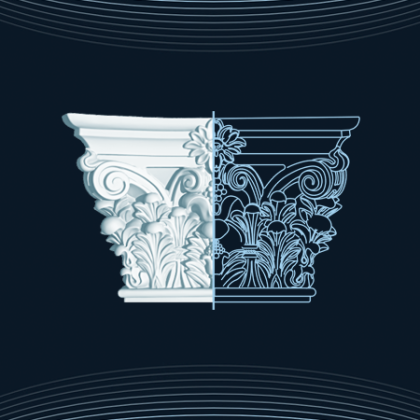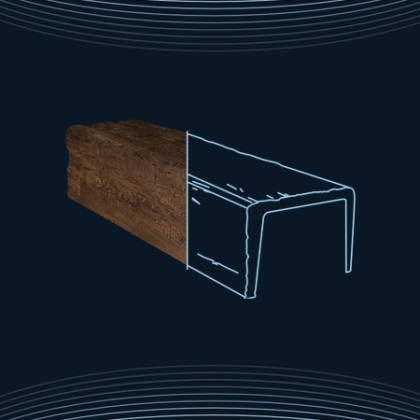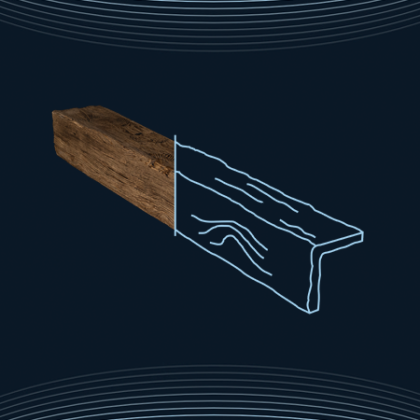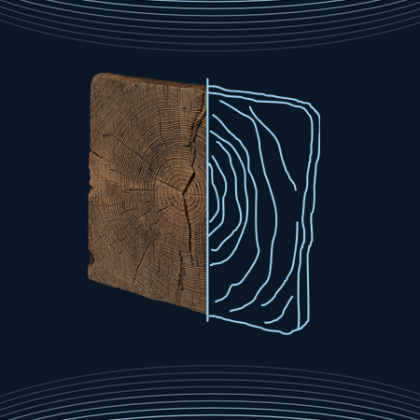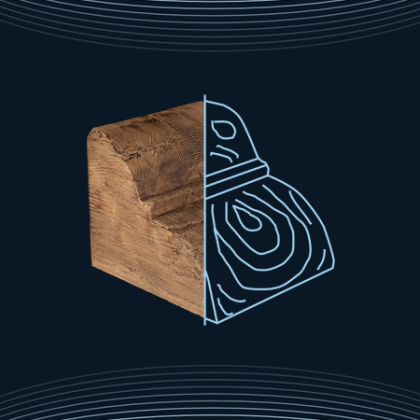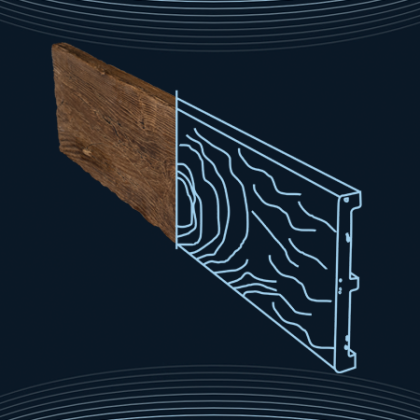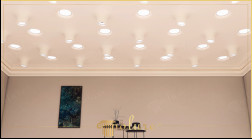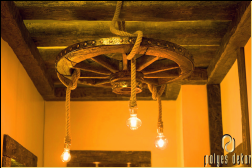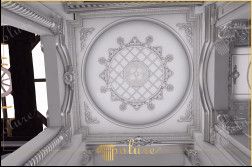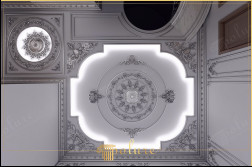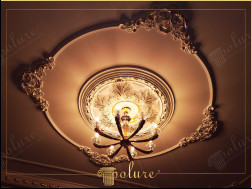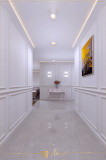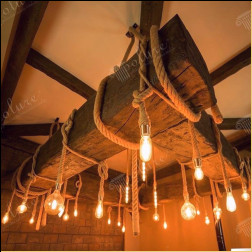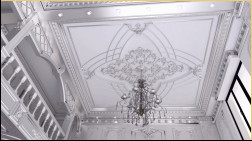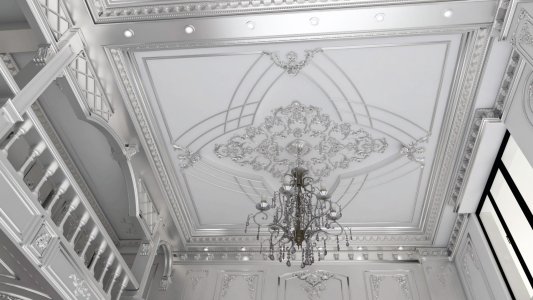
Polyurethane is a type of plastic material used in many products like foam, coatings, and adhesives. It is flexible and durable.
Polyurethane is a unique and versatile material that has found its way into numerous applications across various industries. This synthetic polymer is created by reacting a polyol with a diisocyanate or a polymeric isocyanate in the presence of suitable catalysts and additives. The result is a material that can be engineered to exhibit a wide range of physical properties, making polyurethane suitable for use in a diverse array of products. One of the most remarkable aspects of polyurethane is its versatility. Its properties can be adjusted to be either rigid or flexible, making it an ideal choice for a vast spectrum of applications. For instance, rigid polyurethane foams are widely used in insulation for buildings and refrigeration systems, thanks to their excellent thermal insulation properties. On the other hand, flexible polyurethane foams are commonly found in upholstery, mattresses, and automotive seats, providing comfort and support. Beyond foams, polyurethane is also used in the manufacture of elastomers, adhesives, coatings, sealants, and fibers. Its durability and resistance to abrasion, solvents, and water make it a preferred material in the production of high-performance items such as industrial tires, wheels, and various mechanical parts. The production and disposal of polyurethane can pose environmental challenges, primarily due to its chemical resistance and durability, which make it difficult to break down. However, significant advancements have been made in the development of bio-based polyurethanes and recycling methods to mitigate these impacts. Bio-based polyurethanes, derived from renewable resources, and chemical recycling techniques that break down polyurethane into its constituent chemicals for reuse, are paving the way for a more sustainable future for this indispensable material. In conclusion, polyurethane's unique properties and adaptability have made it an integral part of our daily lives, found in everything from the comfort of our homes to the efficiency of our industries. As technology advances, the potential for new applications and more sustainable production methods continues to grow, ensuring that polyurethane will remain a key material in the global market.Polyurethane: A Versatile Material
Properties and Uses
Environmental Impact and Innovations
What is the historical significance of 's?
The apostrophe (') has a fascinating place in history, playing a crucial role in the evolution of writing and language. Its origins can be traced back to the ancient Greeks, who used a similar mark to indicate elision, a linguistic process where sounds or syllables are omitted from a word. However, the modern apostrophe, as we know it, began to take shape in the 16th century. In English, the apostrophe serves two primary functions: to denote possession and to indicate omitted letters in contractions. For instance, the cat's whiskers shows possession, while can't is a contraction of cannot. Over time, the usage of the apostrophe has become a topic of debate among linguists, writers, and educators, leading to changes and variations in its application. The possessive case, particularly with its use in forming the possessive of plural nouns and names ending in 's,' has seen evolving guidelines. For example, while some style guides recommend adding just an apostrophe after the 's' in names ending in 's' (e.g., James’ book), others suggest adding both an apostrophe and an 's' (e.g., James’s book). Moreover, the apostrophe has been at the center of discussions about language purity and evolution. Some languages have successfully eliminated the apostrophe, while others have never used it. This divergence highlights the apostrophe's role as not just a punctuation mark but as a symbol of linguistic identity and change. In conclusion, the apostrophe's place in history is not just as a tool for clarifying written language. It is also a marker of linguistic evolution, reflecting changes in society, culture, and communication. As language continues to evolve, so too will the role and significance of the apostrophe.The Place of the 's in History
Polyurethane is a versatile material known for its outstanding properties, including durability, flexibility, and resistance to abrasion, solvents, and impacts. It also has excellent insulation properties for both heat and sound, making it widely used in various applications. Polyurethane can be tailored to be either rigid or flexible, catering to different needs, from solid plastics to soft foams. This adaptability, combined with its strength and longevity, makes polyurethane a popular choice in industries ranging from automotive to construction, furniture, and many others.
Polyurethane is a versatile material widely used in various applications, from foam mattresses and car seats to industrial coatings and adhesives. Its popularity stems from its exceptional range of properties, which can be tailored to meet specific needs by altering its chemical structure. Below, we explore some of the key properties that make polyurethane a material of choice in many industries. Polyurethane is renowned for its durability and resistance to abrasion, tearing, and impacts. This makes it an ideal material for products that require longevity and can withstand harsh conditions. Its resistance to chemicals, oil, and grease further enhances its applicability in automotive and industrial settings. One of the most notable properties of polyurethane is its flexibility. It can be manufactured in various degrees of hardness, from soft, flexible foams to rigid forms, without losing its toughness. This flexibility allows for its use in a wide range of products, including flexible foam seating, insulation panels, and elastomeric wheels and tires. Polyurethane foam is an excellent insulator, providing significant thermal and acoustic insulation properties. This makes it an essential material in the construction industry for insulation panels, as well as in appliances and automotive for noise reduction. Depending on its formulation, polyurethane can be highly resistant to water, moisture, and mildew, making it suitable for outdoor applications and products exposed to harsh environmental conditions. With growing environmental concerns, there is an increasing demand for eco-friendly materials. Polyurethane manufacturers have responded by developing bio-based polyurethanes made from renewable resources, offering a more sustainable option without compromising on performance. The versatile properties of polyurethane make it a preferred material for a wide range of applications. Its durability, flexibility, insulation capabilities, and resistance to harsh conditions provide solutions for industries ranging from construction and automotive to furniture and footwear. As technology advances, the development of more sustainable polyurethane options continues to enhance its appeal.Polyurethane Properties
Durability and Resistance
Flexibility
Thermal and Acoustic Insulation
Water and Moisture Resistance
Eco-Friendly Options
Conclusion
Are the applications of polyurethane decoration distinct?
Polyurethane, a versatile and durable material, has found extensive use in the world of decoration. Its flexibility, strength, and resistance to wear and tear make it an ideal choice for a wide range of applications. Unlike other materials, polyurethane can be molded into almost any shape and texture, offering endless possibilities for interior and exterior decorations. This article explores the diverse usage areas of polyurethane decoration, highlighting its adaptability and effectiveness in various settings. In interior design, polyurethane is commonly used for creating decorative elements such as moldings, trims, ceiling medallions, and wall panels. Its lightweight nature makes it easy to install, while its ability to mimic the look of wood, stone, or metal allows for a luxurious finish at a fraction of the cost. Polyurethane decorations are not only aesthetically pleasing but also durable, resisting moisture and mold, which is particularly beneficial in humid environments. Polyurethane plays a crucial role in furniture manufacturing, providing a durable coating that can enhance the appearance and lifespan of furniture pieces. It is used in creating intricate designs on headboards, tables, and chairs, offering a high level of detail that is difficult to achieve with other materials. Furthermore, polyurethane finishes protect the furniture from scratches, stains, and general wear, maintaining their beauty over time. Exterior decorations made from polyurethane include columns, balustrades, door and window surrounds, and even faux stone and brick veneers. These elements withstand harsh weather conditions, including UV rays, rain, and temperature fluctuations, without deteriorating. Their maintenance is minimal, making them a cost-effective solution for enhancing the curb appeal of buildings and homes. Polyurethane is extensively used in creating themed environments for amusement parks, movie sets, and retail displays. Its ability to be sculpted into any shape or form allows designers to bring their most imaginative concepts to life. These decorations can range from realistic rock formations to fantastical creatures, all benefiting from polyurethane's durability and lightweight properties. The diverse usage areas of polyurethane decoration underscore its versatility and efficiency in both functional and aesthetic applications. Whether it's enhancing the interior ambiance of a home, contributing to the durability and beauty of furniture, adding charm to building exteriors, or creating captivating themed environments, polyurethane decorations offer practical and innovative solutions. As technology and materials science continue to evolve, the possibilities for polyurethane in decoration are bound to expand even further.Polyurethane Decoration: Exploring Its Diverse Usage Areas
Interior Design
Furniture Manufacturing
Exterior Decorations
Themed Environments
Conclusion
Polyurethane models.
Polyurethane models are widely used in various industries due to their versatility and durability. These models can be found in automotive parts, furniture, footwear, and even in the creation of prototypes for product development. Polyurethane, a type of polymer, is known for its resilience, flexibility, and resistance to wear and tear, making it an ideal material for creating models that need to withstand rigorous testing or use. One of the key advantages of polyurethane models is their ability to mimic the properties of metals, woods, and rubbers, allowing designers and engineers to experiment with different textures and densities. This versatility opens up a wide range of applications, from creating flexible molds for concrete to producing soft, durable soles for shoes. In the automotive industry, polyurethane is used to create models of car parts for testing and design verification before mass production. These parts include bumpers, interior panels, and sound dampening materials, which benefit from polyurethane's durability and sound-absorbing qualities. In furniture design, polyurethane models are utilized to prototype designs, test ergonomics, and ensure the comfort and durability of the final product. The material's ability to be cast into complex shapes and its excellent finish after casting make it a popular choice among designers. Furthermore, in the rapidly evolving field of product development, polyurethane models play a crucial role in prototyping. They enable designers to create accurate, functional prototypes that closely resemble the final product, allowing for thorough testing and refinement before the product goes to market. In conclusion, polyurethane models are an indispensable tool in various industries, offering the flexibility, durability, and precision required to bring innovative ideas to life. Their wide range of applications highlights the material's versatility and its ability to meet the demands of modern manufacturing and design processes.Polyurethane Models
Yes, polyurethane can be used on exterior walls.
Polyurethane is a versatile material widely used in various applications, from insulation to finishes, due to its durability and resistance to elements. When it comes to exterior walls, the question often arises: Can polyurethane be used effectively? The answer is yes, but with certain considerations. Polyurethane offers several advantages when applied to exterior walls. Firstly, it acts as an excellent insulator, helping to keep the interior temperature stable and reducing energy costs. Secondly, it provides a durable finish that is resistant to weathering, UV rays, and moisture, protecting the walls from the harsh outdoor environment. Additionally, polyurethane can enhance the aesthetic appeal of a building by providing a smooth, finished look. While polyurethane is beneficial for exterior walls, there are considerations to keep in mind. The type of polyurethane, whether it's water-based or oil-based, will affect its suitability and application method. Water-based polyurethane is easier to apply and clean up but may not be as durable as oil-based varieties. On the other hand, oil-based polyurethane offers more durability but requires more preparation and a longer drying time. It's also important to ensure that the surface is properly prepared and primed to achieve the best adhesion and finish. In conclusion, polyurethane can be an excellent choice for exterior walls, offering insulation, durability, and aesthetic benefits. However, selecting the right type of polyurethane and ensuring proper application is crucial for achieving the best results. With the right approach, polyurethane can significantly enhance the performance and appearance of exterior walls.Using Polyurethane on Exterior Walls
Benefits of Polyurethane on Exterior Walls
Considerations for Application
Conclusion
Yes, polyurethane can be painted.
One of the common questions when it comes to wood finishing and refurbishing projects is whether polyurethane surfaces can be painted. The short answer is yes, polyurethane can be painted, but it requires proper preparation and the right approach to ensure the paint adheres well and the finish lasts. Before painting over polyurethane, the surface must be properly prepared. This usually involves cleaning the surface thoroughly to remove any grease, dirt, or dust. After cleaning, the polyurethane surface needs to be lightly sanded. Sanding creates a rougher surface for the paint to adhere to. It's important to clean off any dust from sanding before moving on to painting. Not all paints are suitable for use over polyurethane. Water-based paints can sometimes have difficulty adhering to a polyurethane-coated surface. Oil-based paints, or specially formulated acrylic paints, tend to work better on polyurethane finishes. Using a primer designed for use on polyurethane can also improve paint adhesion and result in a smoother finish. When painting polyurethane, applying thin coats is recommended. This allows the paint to dry and adhere better than thicker coats, which can take longer to dry and may not adhere as well. It's also advisable to lightly sand between coats to ensure a smooth finish. Depending on the type of paint and the desired finish, two or more coats may be necessary. In conclusion, while polyurethane surfaces can be challenging to paint due to their smooth, non-porous nature, it is certainly possible with the right preparation and materials. Proper cleaning, sanding, and the use of suitable paints and primers can result in a beautiful, long-lasting finish on polyurethane surfaces.Can Polyurethane Be Painted?
Preparation is Key
Choosing the Right Paint
Application Tips
Conclusion
To apply polyurethane, follow these steps: 1. Prepare the surface by sanding it smooth. 2. Clean off any dust with a tack cloth or damp rag. 3. Apply a thin coat of polyurethane using a brush or foam applicator. 4. Let it dry as per the instructions on the can. 5. Sand lightly with fine-grit sandpaper. 6. Clean off any dust. 7. Apply the next coat. 8. Repeat sanding and cleaning between coats if applying more. 9. Let it cure fully before using the surface.
Applying polyurethane is a great way to protect and enhance the appearance of wood projects. Here's a step-by-step guide on how to apply polyurethane effectively: By following these steps, you can achieve a professional-looking finish that will protect your wood projects for years to come.How to Apply Polyurethane
Materials Needed
Preparation
Application
Tips for Best Results
Polyurethane is a type of plastic used for its flexibility and durability, often found in foam forms for insulation, furniture, and car parts. Styrofoam is a brand name for a kind of polystyrene foam specifically used for insulation and craft materials, known for being lightweight and excellent at keeping things cold or hot.
Polyurethane and Styrofoam are both widely used materials in various industries, but they have distinct properties and applications. Understanding the differences between these two materials can help in selecting the right one for a specific use. Polyurethane is a type of polymer made by combining diisocyanate with polyols. The resulting material can be either rigid or flexible, making it versatile for various applications. Styrofoam, on the other hand, is a trademarked brand of closed-cell extruded polystyrene foam (XPS) commonly used for insulation and craft applications. Polyurethane is known for its durability, flexibility, and resistance to temperature, impact, and chemicals. It can be tailored to be either soft and spongy or hard and rigid. Styrofoam is lightweight, has excellent insulation properties, and is resistant to moisture and compression. However, it is not as flexible as polyurethane and can be more susceptible to damage from solvents and chemicals. The versatility of polyurethane allows it to be used in a wide range of products, including automotive parts, furniture, footwear, and insulation materials. Styrofoam is predominantly used in insulation for buildings, packaging materials to protect goods during shipping, and in crafts and model making due to its easy-to-cut nature. Both materials have been scrutinized for their environmental impact. Polyurethane can be difficult to recycle, and its production involves toxic chemicals. Styrofoam, while recyclable in some areas, is not biodegradable and can persist in the environment for centuries, contributing to pollution and harm to wildlife. In conclusion, while polyurethane and Styrofoam serve different needs and have unique benefits, their environmental impact cannot be overlooked. Advances in recycling technologies and the development of more sustainable materials are crucial for mitigating their negative effects on the environment.Difference Between Polyurethane and Styrofoam
Composition
Properties
Applications
Environmental Impact
Conclusion
Polyurethane is a type of plastic material used for coatings and foam, while plaster is a mixture of water, sand, and lime or gypsum used for coating walls and ceilings.
Polyurethane and plaster are two materials commonly used in building and decorative applications. Each has its unique properties, applications, and benefits. Understanding the difference between polyurethane and plaster can help you make informed decisions for your construction or decoration projects. Polyurethane is a type of polymer that is flexible, resilient, and can be molded into various shapes and forms. It is often used in the production of foam, sealants, adhesives, and coatings. Polyurethane is known for its durability, resistance to moisture, and ability to mimic the appearance of more expensive materials like wood and stone. Plaster, on the other hand, is a building material used for coating, protecting, and decorating walls and ceilings. It is made by mixing water with gypsum, cement, or lime. Plaster provides a smooth or textured surface that can be painted or left as is. It is appreciated for its aesthetic appeal and ability to create intricate designs. In conclusion, while polyurethane and plaster both serve important roles in construction and decoration, they have distinct characteristics that make them suitable for different applications. Polyurethane offers flexibility, durability, and versatility, making it ideal for a wide range of uses. Plaster, with its aesthetic appeal and ability to create detailed designs, is perfect for decorative finishes. Choosing between the two depends on the specific requirements of your project.Difference Between Polyurethane and Plaster
What is Polyurethane?
What is Plaster?
Key Differences
Conclusion
Polyurethane precast is made from a type of plastic that's tough and versatile, used for various construction elements due to its light weight and durability. GRC precast, which stands for Glassfibre Reinforced Concrete, combines cement with glass fibers to create a material that's both strong and lightweight, often used for decorative elements in buildings because it can be molded into intricate shapes.
In the world of construction, precast materials are essential for their durability, versatility, and efficiency. Among these materials, Polyurethane Precast and Glassfibre Reinforced Concrete (GRC) Precast stand out for their unique properties and applications. Understanding the differences between these two can help architects, engineers, and builders make informed decisions for their projects. Polyurethane Precast is a type of building material made from high-density polyurethane foam. It is known for its lightweight, insulation properties, and flexibility in design. Polyurethane precast is often used for decorative elements, moldings, and façade panels due to its ability to replicate intricate details and textures. GRC Precast, or Glassfibre Reinforced Concrete Precast, is a composite material consisting of cement, fine aggregates, water, chemical admixtures, and glass fibers. It is celebrated for its high strength-to-weight ratio, durability, and fire resistance. GRC is commonly used in cladding panels, architectural elements, and permanent formwork. Choosing between Polyurethane Precast and GRC Precast depends on the specific requirements of a project, including weight, strength, insulation needs, and aesthetic preferences. By understanding the distinct characteristics of each material, construction professionals can leverage the right precast material to achieve both functional and design objectives.Difference Between Polyurethane Precast and GRC Precast
Introduction
What is Polyurethane Precast?
What is GRC Precast?
Key Differences
Conclusion
Polyurethane prices.
Polyurethane, a versatile polymer used in everything from foam mattresses to industrial coatings, has seen fluctuating prices over recent years. The cost of polyurethane is influenced by several factors including raw material costs, demand in various sectors, and global economic conditions. The primary raw materials for polyurethane production are polyols and isocyanates, both derived from crude oil. Consequently, the price of crude oil significantly impacts polyurethane prices. Furthermore, market demand in industries such as automotive, construction, and furniture also plays a critical role. Economic policies, trade tariffs, and environmental regulations can also affect production costs and availability. As of the latest data, polyurethane prices have been experiencing volatility due to the unstable crude oil market and the global economic slowdown. However, with the anticipated recovery of the global economy and stabilization in oil prices, polyurethane prices are expected to become more stable. Innovations in bio-based polyurethanes and recycling technologies may also lead to more sustainable and cost-effective production methods in the future. Understanding the dynamics of polyurethane prices is essential for businesses and consumers alike. By keeping an eye on the factors that influence its cost, stakeholders can make informed decisions. Despite current fluctuations, the long-term outlook suggests a stabilization of prices, driven by market recovery and technological advancements.Polyurethane Prices: An Overview
Factors Influencing Polyurethane Prices
Current Trends and Future Outlook
Conclusion
Information Gallery
List of detailed descriptions of images in the image gallery.
 English
English
 Romanian
Romanian




